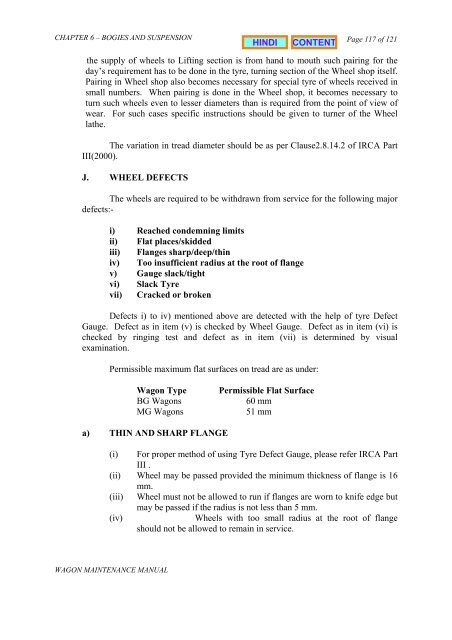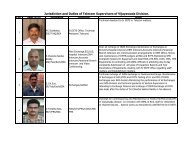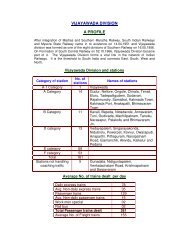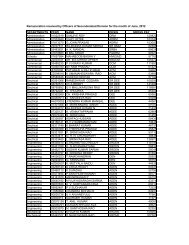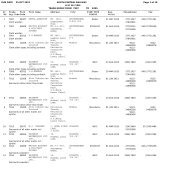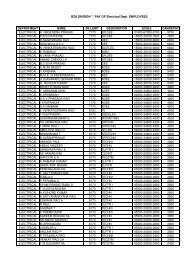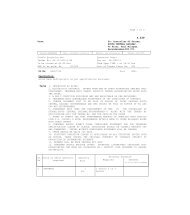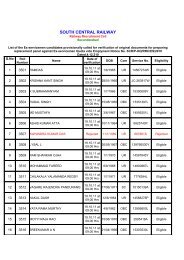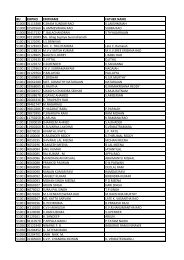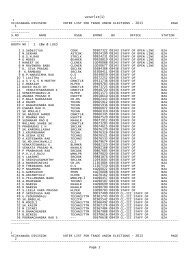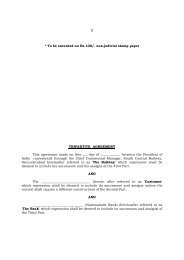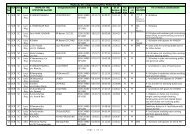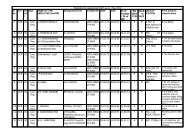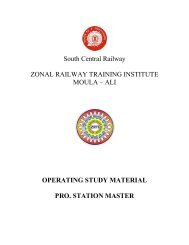BOGIES AND SUSPENSION - South Central Railway
BOGIES AND SUSPENSION - South Central Railway
BOGIES AND SUSPENSION - South Central Railway
You also want an ePaper? Increase the reach of your titles
YUMPU automatically turns print PDFs into web optimized ePapers that Google loves.
CHAPTER 6 – <strong>BOGIES</strong> <strong>AND</strong> <strong>SUSPENSION</strong><br />
WAGON MAINTENANCE MANUAL<br />
Page 117 of 121<br />
the supply of wheels to Lifting section is from hand to mouth such pairing for the<br />
day’s requirement has to be done in the tyre, turning section of the Wheel shop itself.<br />
Pairing in Wheel shop also becomes necessary for special tyre of wheels received in<br />
small numbers. When pairing is done in the Wheel shop, it becomes necessary to<br />
turn such wheels even to lesser diameters than is required from the point of view of<br />
wear. For such cases specific instructions should be given to turner of the Wheel<br />
lathe.<br />
The variation in tread diameter should be as per Clause2.8.14.2 of IRCA Part<br />
III(2000).<br />
J. WHEEL DEFECTS<br />
The wheels are required to be withdrawn from service for the following major<br />
defects:-<br />
i) Reached condemning limits<br />
ii) Flat places/skidded<br />
iii) Flanges sharp/deep/thin<br />
iv) Too insufficient radius at the root of flange<br />
v) Gauge slack/tight<br />
vi) Slack Tyre<br />
vii) Cracked or broken<br />
Defects i) to iv) mentioned above are detected with the help of tyre Defect<br />
Gauge. Defect as in item (v) is checked by Wheel Gauge. Defect as in item (vi) is<br />
checked by ringing test and defect as in item (vii) is determined by visual<br />
examination.<br />
Permissible maximum flat surfaces on tread are as under:<br />
Wagon Type Permissible Flat Surface<br />
BG Wagons 60 mm<br />
MG Wagons 51 mm<br />
a) THIN <strong>AND</strong> SHARP FLANGE<br />
(i) For proper method of using Tyre Defect Gauge, please refer IRCA Part<br />
III .<br />
(ii) Wheel may be passed provided the minimum thickness of flange is 16<br />
mm.<br />
(iii) Wheel must not be allowed to run if flanges are worn to knife edge but<br />
may be passed if the radius is not less than 5 mm.<br />
(iv) Wheels with too small radius at the root of flange<br />
should not be allowed to remain in service.


